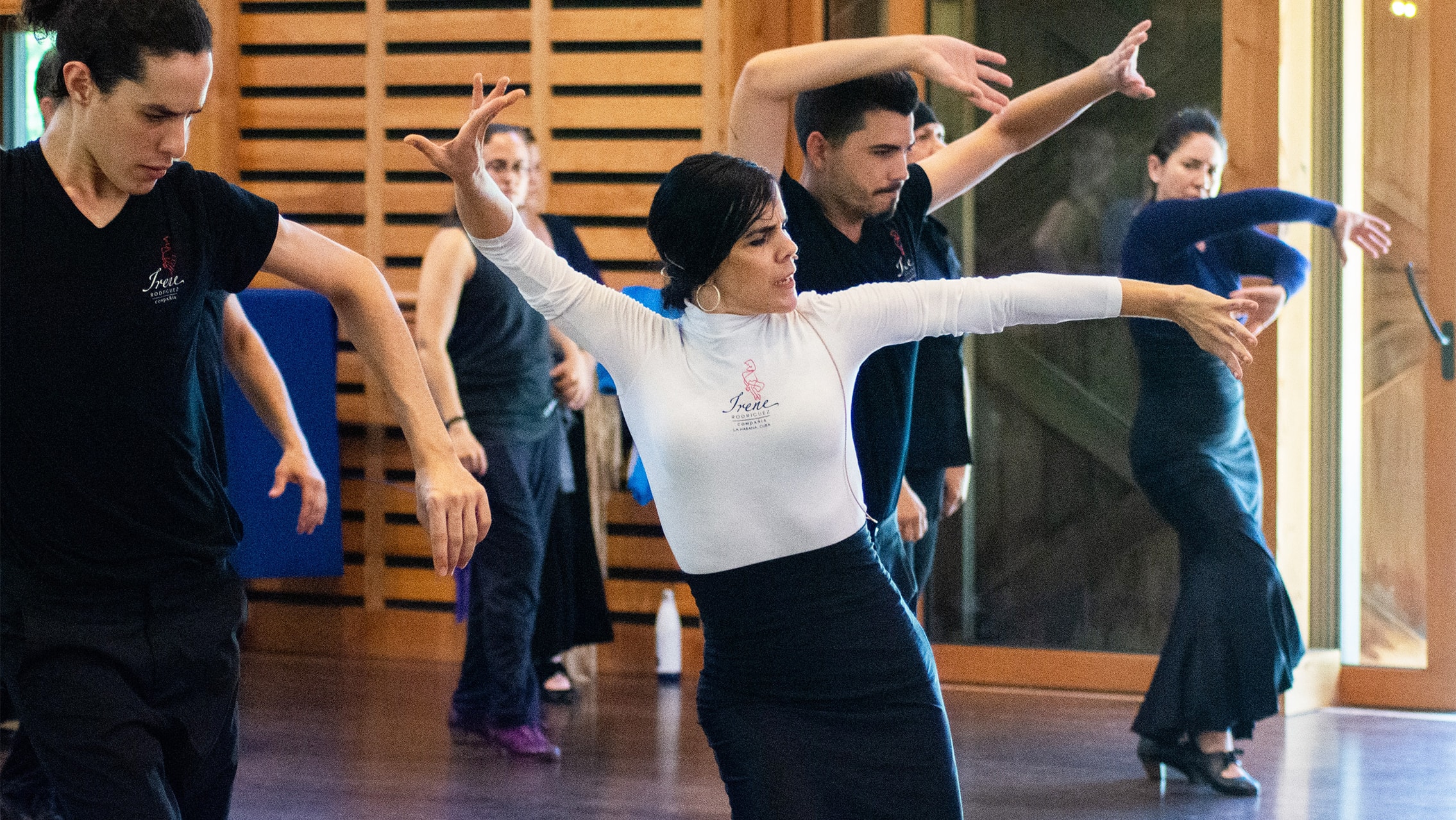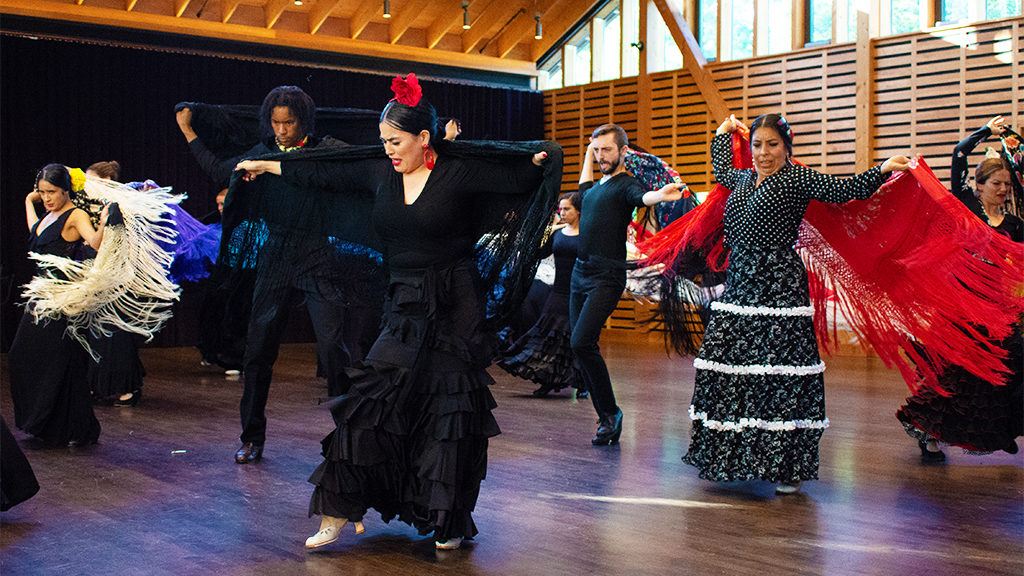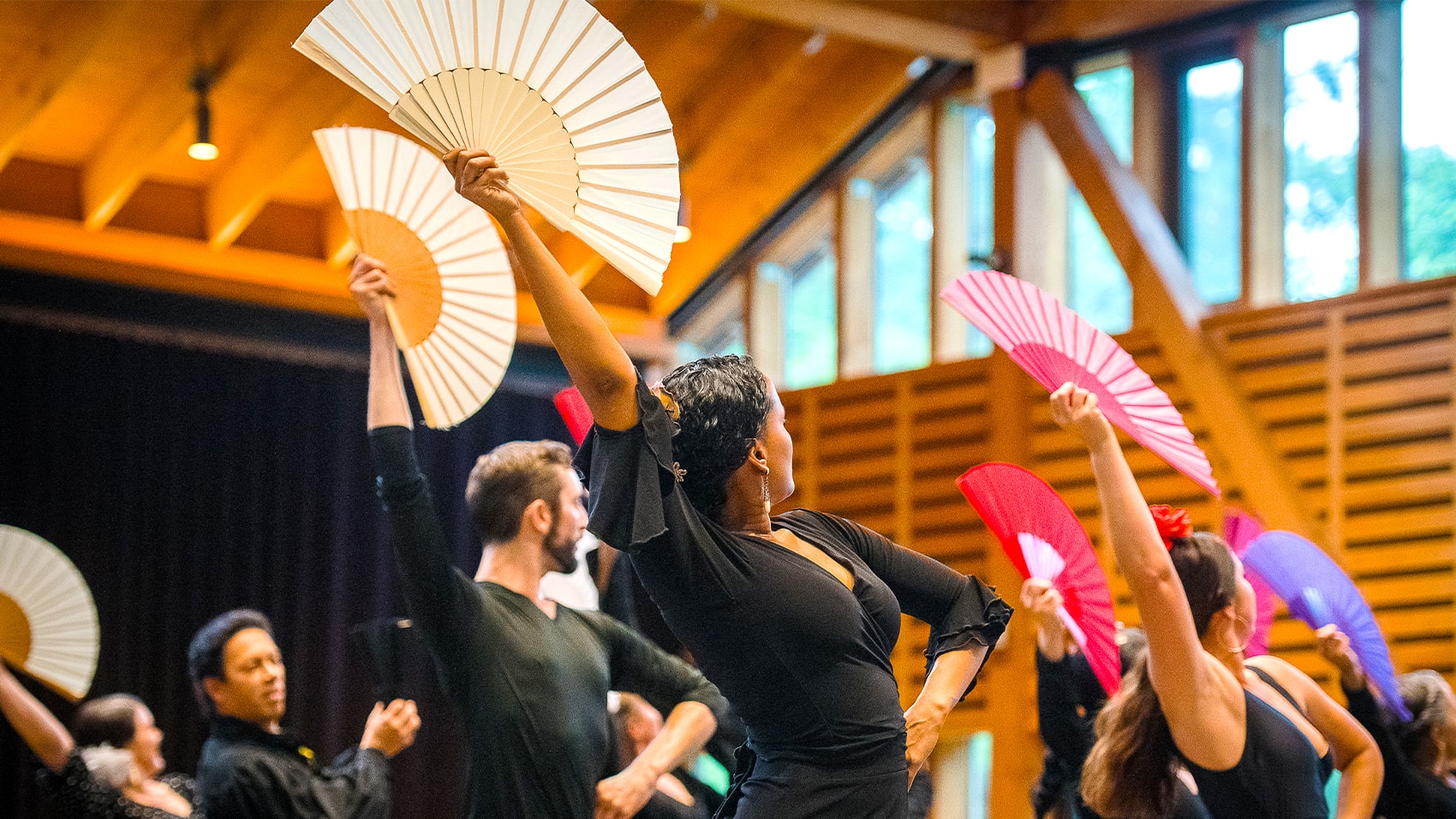
Irene Rodríguez is a dominant force in the world of flamenco and Spanish dance based in Havana, Cuba. The New York Times has deemed her an “intense” and “exacting” dancer, she has won numerous awards including First Prize in the VIII Iberoamerican Choreography Competition and she now serves as the lead dancer, ballet mistress, and choreographer of Compañía Irene Rodríguez.
For being such an esteemed figure, Irene Rodríguez was asked to serve as the Program Director for the 2019 Flamenco & Spanish Dance Program of The School at Jacob’s Pillow. During this time, she also performed with her company in the Ted Shawn Theatre as a part of Festival 2019. At The School, Rodríguez taught alongside highly revered teachers Carmela Greco and Carmen Ledesma, and coached dancers in genuine interpretations of rhythms, palos de flamenco, and how to embrace the energetic devotion required to release a dancer’s “duende”.
Curious to hear more about Irene Rodríguez? Festival Intern Matthew Osorio and Nel Shelby Productions sat down with her to discuss her experience at Jacob’s Pillow and the passion behind her work. Keep reading for the inside scoop!
Q: The last time a Flamenco & Spanish Dance program was at Jacob’s Pillow was in 2008, over 10 years ago. How does it feel knowing you led the return of this program?
I can’t even believe it, and being so young, that I can direct a program like this. And, that I can have all these wonderful dancers. Teaching with Carmela Greco and Carmen Ledesma, it is a very big opportunity for me. I’m so proud and so thankful for that. Now the dancers will return to their own companies, countries, and schools, where they’ll teach and dance with all these new steps and new visions of flamenco from Carmela Greco, Carmen Ledesma, and myself.
Q: Can you talk about your experience these past two weeks, serving as the Program Director for the Flamenco & Spanish Dance Program?
It has been challenging to prepare the whole schedule for weeks in advance and include Spanish dances as well. We are in the studio every morning from 9am to 5pm, six days a week. The dancers are exhausted because each class is demanding more and more from them. Sometimes the dancers don’t appreciate the classic Spanish dances as much compared to flamenco because it’s so passionate, so great a style, but having these two styles has been great for them. They have learned so much in just two weeks. Now they have a lot to work with and to teach.

Q: What did you hope to instill in the dancers of the Flamenco and Spanish Dance Program?
All of them are almost professionals if not almost entering that stage within their careers. It’s very important they take small pieces from every teacher and prepare their own style. It’s important to create our own way to speak, express, or dance. To see the influence and all the things a teacher can give you is very important. The dancers had in the first week two great teachers [Carmen Ledesma and Carmela Greco], who are legends both in flamenco and in Spain. Every teacher gives you a small piece of their hearts. It is important when you are a dancer to take every small piece and create your own style of dance.
Q: With regards to the dance field at large, what do you think is the next step in the evolution of flamenco?
The next step is for flamenco to become one of the contemporary styles of dance. It is currently in the process, but it will take more space to become an international style, not just a folk style from Spain that can only be danced in Spain, because it’s not and we are showing it’s not. There is amazing flamenco in Colombia, Mexico, U.S., Argentina, and of course in Spain. Flamenco is an international vocabulary that you only have to be well prepared and love it, to dance it. This will be the future of flamenco, combining it with respect to the traditions and teachers, but giving it a new and modern vision.
“Flamenco is an international vocabulary that you only have to be well prepared and love it, to dance it.”
Irene Rodríguez
Q: What contribution would you like to make to flamenco?
I love to choreograph flamenco. I love to improvise when I dance flamenco, but using flamenco as the base of the choreography. This can be a new point for my modern vision to use contemporary classic preparation together with the flamenco style. Maybe a Latin American flair in flamenco can be another source for my vision. Dancers and choreographers don’t always know what they are doing. Other people that can have another point of view, the audience point of view, and the opportunity to compare our work, they can really see what I’m doing. I’m sure they understand what I’m doing better than me.
Q: You said in an interview one time, the power of art is to sensitize hearts. How do you think flamenco accomplishes this?
Flamenco is one of the most sensitive styles. Every part of flamenco is dancing for a different feeling. In the moment you are dancing flamenco you are feeling this emotion and of course you give it to the audience. You transmit it to the audience, and it becomes very important for them because they are feeling what you are feeling. That is the most important thing in art. It’s the same when you see a painting or when you listen to music, it’s sensitive. For me, I think it’s like this too because every time I’m dancing I try to communicate with the audience. I want them to be a part of what I’m doing, to break this fourth wall, and dance with them and them dance with me.
Learn about the School
A curriculum made current by one of the most influential international dance networks in the field, guest choreographers create original works on a small ensemble of dancers who perform them for weekly festival audiences. The School has been crucial to the careers of dance artists for over 80 years and its alumni are defining and shaping the field.
Learn about the School
Led by acclaimed artistic directors and choreographers, The School at Jacob’s Pillow transforms dancers into artists.
